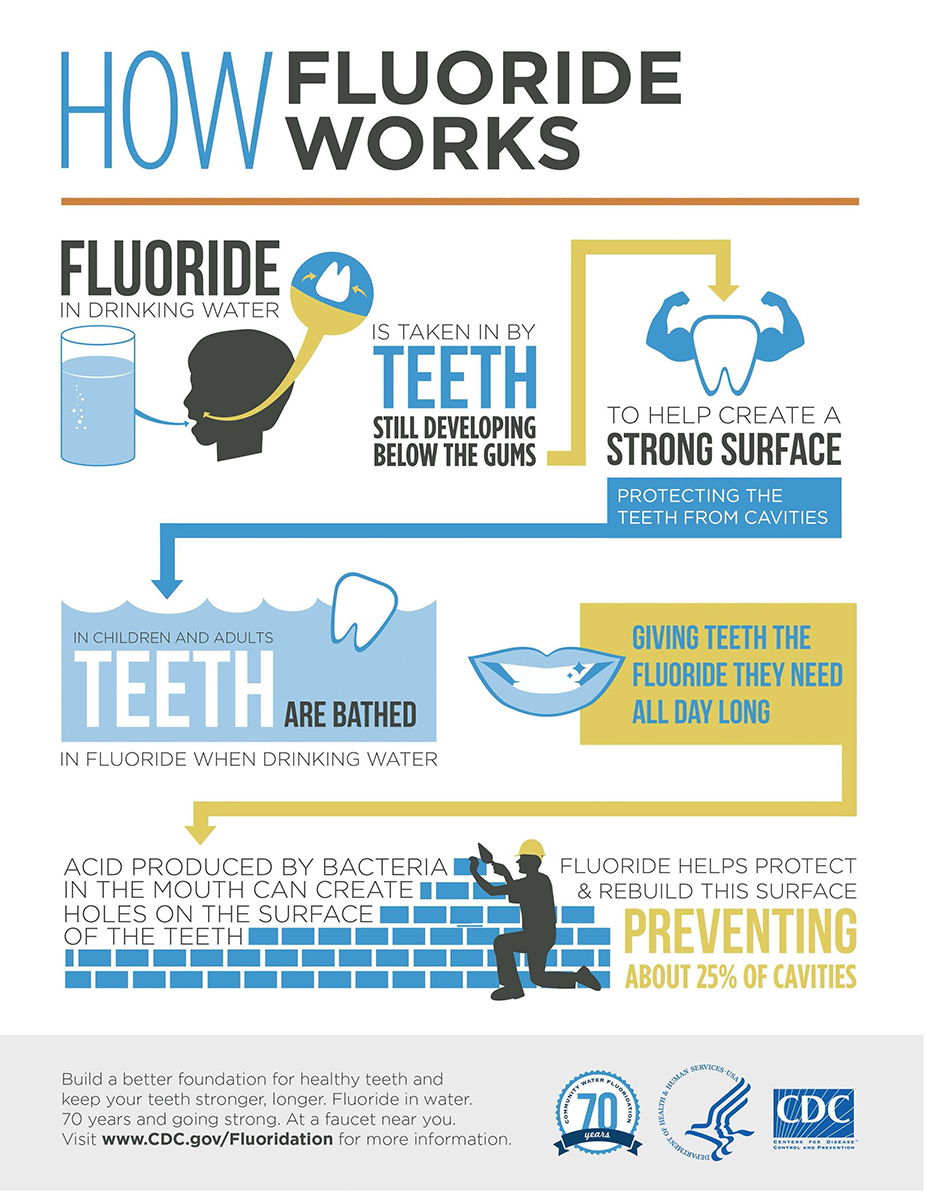
By Becky Schuerman, Extension Domestic Water/Wastewater Associate
In last month's Iron and Manganese article, the concentration that can cause taste, appearance and staining was incorrect, it should have read 300 micrograms per liter (μg/L) or parts per billion (ppb).
There are naturally occurring elements and minerals within Nebraska geology, and with that, it is not uncommon to find them in Nebraska’s groundwater. This month, the spotlight series continues with fluoride.
FLUORIDE
Some naturally occurring fluoride exists in much of Nebraska’s groundwater from the erosion of natural deposits. Fluoride is colorless, odorless and tasteless and the only way it can be detected is by submitting a water sample for laboratory testing. Fluoride is also found in discharge from fertilizer and aluminum factories.
Private-well owners should have their water tested for fluoride and share the results with their dentist. The amount of fluoride contained in groundwater is usually small, but can vary among locations. It is important to consult with your dentist and/or physician about your water test results, the current fluoride-containing products you use and the possible need for topical fluoride treatments or supplements.
BENEFITS
The reduction of tooth decay is a well-documented dental benefit of drinking water that contains the optimum level of fluoride. The American Dental Association recommends an optimum-level of 1.0 milligrams per liter (mg/L) or parts per million (ppm). This optimum level of 1.0 mg/L has also been approved by the U.S. Public Health Service and the Centers for Disease Control and Prevention to minimize or eliminate potential health risks, while ensuring the potential benefits.
Fluoride provides benefits for both children and adults. In children whose teeth haven’t erupted (broken through the gums), fluoride is taken in through the consumption of food, drink and/or other dietary supplements. It strengthens the tooth enamel which helps prevent tooth decay. We call this a “systemic” benefit. After the teeth have erupted, fluoride helps to rebuild weakened tooth enamel and can reverse some early signs of tooth decay. One gains the “topical” benefits of fluoride when you brush your teeth with fluoride toothpaste or use fluoride mouth rinse. The topical benefit is also realized when you consume foods and/or drinks that contain fluoride because it becomes a part of your saliva. This helps keep a small amount of fluoride surrounding your teeth for continuous strengthening and rebuilding of tooth enamel.
HEALTH EFFECTS
There are potential health effects directly related to the concentrations found in drinking water. Potential health effects from long-term exposure to high levels of fluoride (above 4.0 mg/L) include bone disease (painful/tender/brittle bones) primarily in adults and mottled teeth (fluorosis) which is yellow/brown discoloration and pitting of the teeth in children. The most common treatment methods to remove fluoride from drinking water include: activated alumina filters, anion exchange, distillation and reverse osmosis.
FLUORIDATION
Since 2008, when the Nebraska Unicameral passed LB 245, public water systems of Nebraska communities with populations over 1,000 have had to fluoridate the water they serve. This can be voted down by the voters of a community, just as smaller communities hold a vote to begin or not begin fluoridation. Once fluoridation is approved, it has to continue. The State of Nebraska Public Drinking Water Program fluoridation regulations state that public water systems that fluoridate shall maintain fluoride levels of 0.8 to 1.5 mg/L or ppm. The recommended optimal level is 1.0 to 1.3 mg/L or ppm. No fluoride need be added to water systems whose source water is at 0.7 ppm fluoride naturally. For Nebraska’s community water systems fluoride data, go to https://nccd.cdc.gov/DOH_MWF/Default/Default.aspx.
FOR MORE INFORMATION
For further information about fluoride and other drinking water topics, see Nebraska Extension’s NebGuides at https://water.unl.edu/article/drinking-water/nebguides.